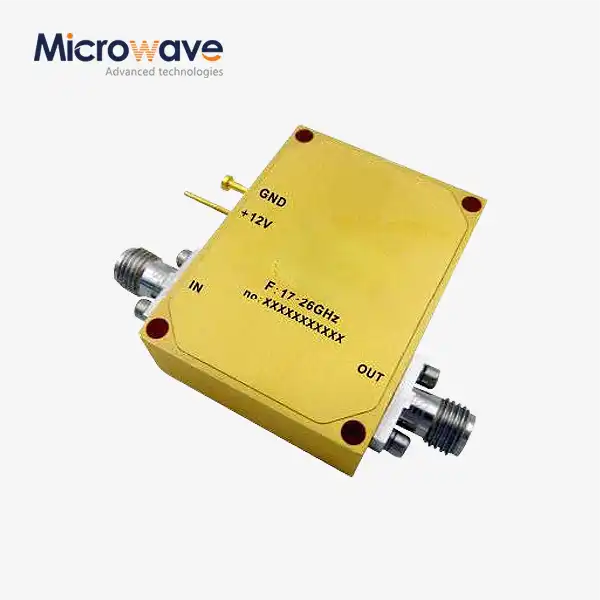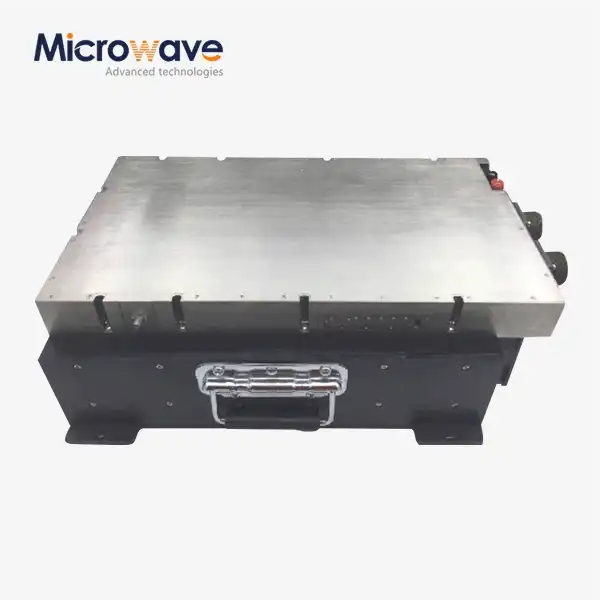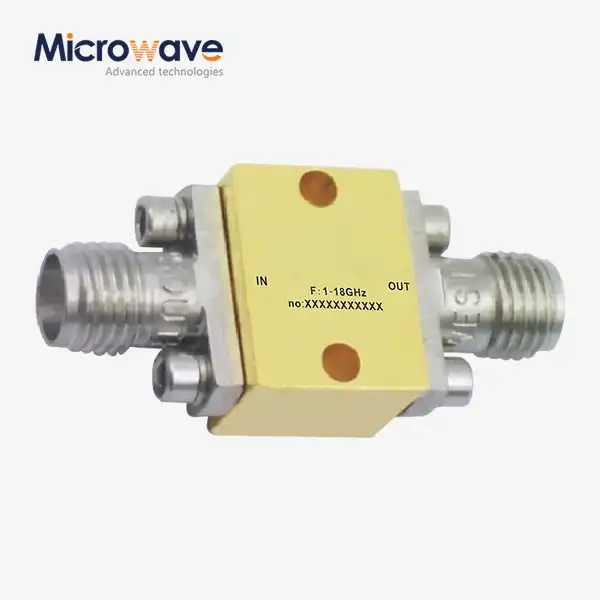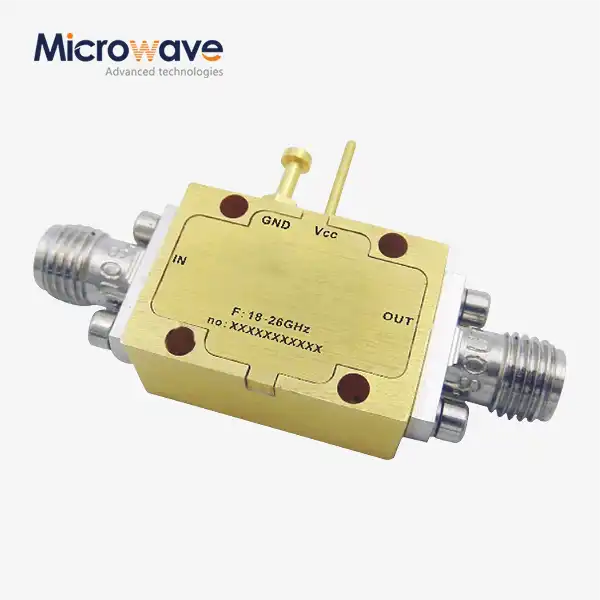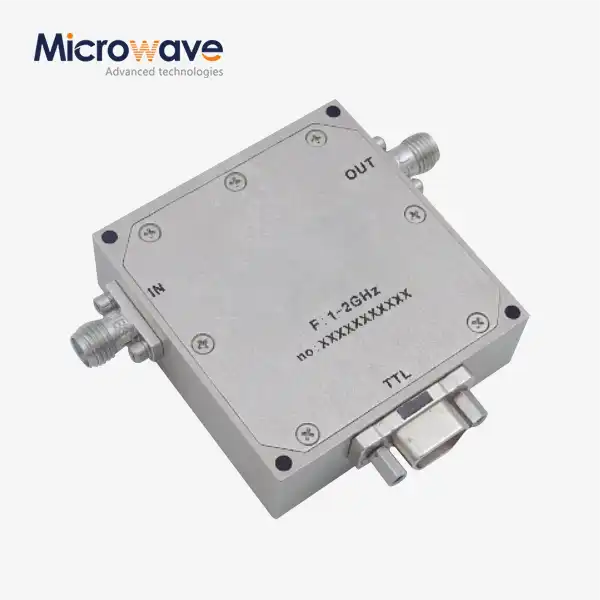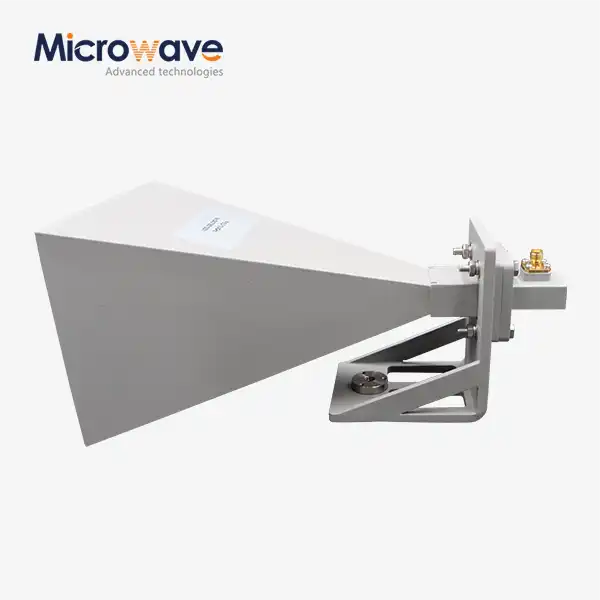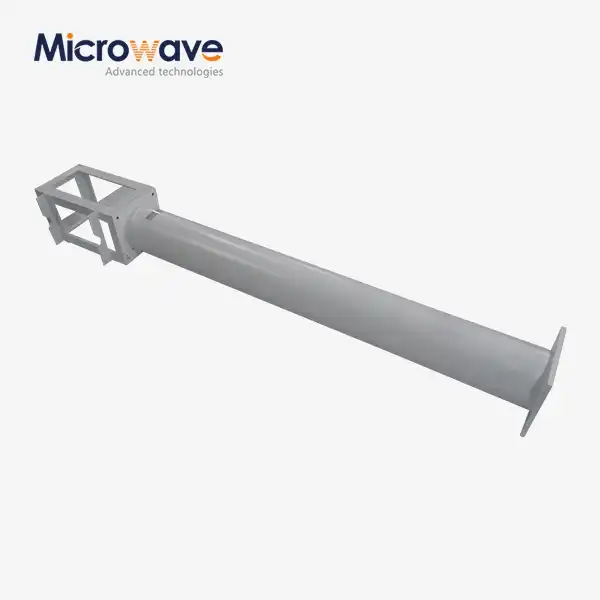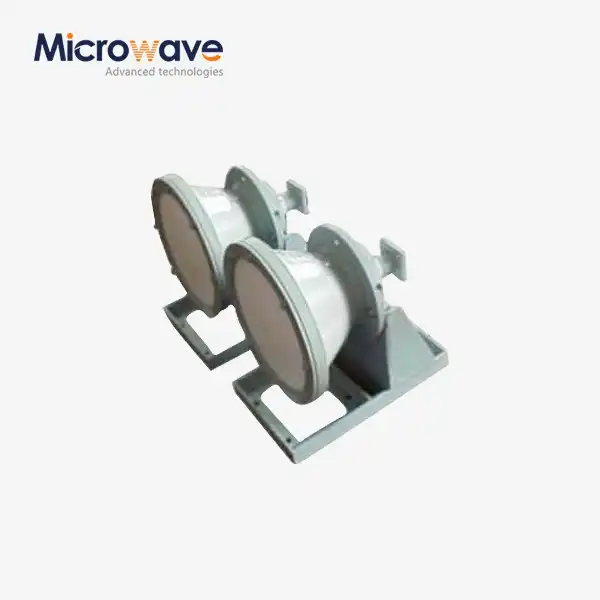What is a Low Phase Noise Amplifier and how does it differ from regular amplifiers
Low Phase Noise Amplifiers represent a specialized class of signal amplification devices designed to boost signal strength while minimizing phase fluctuations or jitter. Unlike conventional amplifiers that primarily focus on gain and power output, Low Phase Noise Amplifiers are specifically engineered to preserve signal integrity by maintaining exceptionally low phase noise performance. These sophisticated devices are crucial in high-precision applications where signal purity directly impacts system performance, such as in telecommunications, radar systems, test equipment, and satellite communications. The fundamental distinction lies in their ability to amplify signals without introducing significant phase distortions, thereby ensuring more accurate signal reproduction and enhanced system reliability compared to standard amplifiers.
Understanding the Core Technology of Low Phase Noise Amplifiers
Phase Noise Fundamentals and Significance
Phase noise represents random fluctuations in the phase of an electronic signal, often manifested as short-term instabilities in frequency. In precision electronic systems, these fluctuations can severely degrade performance by introducing timing errors and reducing signal quality. Low Phase Noise Amplifiers are specifically designed to minimize these unwanted fluctuations, maintaining signal integrity throughout the amplification process. The significance of phase noise control becomes particularly evident in applications like radar systems, where phase noise can mask small targets or create false readings. Similarly, in communication systems, excessive phase noise can increase bit error rates and reduce data throughput. Advanced Microwave Technologies' Low Phase Noise Amplifiers address these challenges by achieving remarkably low phase noise levels, with performance as impressive as -165 dBc/Hz at a 10 kHz offset. This exceptional performance allows for clearer signal transmission, improved detection capabilities, and ultimately more reliable system operation across various demanding applications where signal purity is paramount.
Technical Comparison with Standard Amplifiers
When comparing Low Phase Noise Amplifiers with standard amplifiers, several critical technical differences emerge that explain their superior performance in precision applications. Traditional amplifiers typically prioritize gain magnitude and power efficiency, often at the expense of phase stability. In contrast, Low Phase Noise Amplifiers incorporate specialized circuit topologies, premium components, and advanced isolation techniques to maintain phase coherence. Standard amplifiers commonly introduce significant phase variations across their operating bandwidth, while Low Phase Noise Amplifiers from Advanced Microwave Technologies maintain exceptional gain flatness of ±2.5dB across their operating range. Additionally, conventional amplifiers often exhibit substantial gain variation with temperature fluctuations, whereas Low Phase Noise Amplifiers feature temperature-compensated designs that limit gain variation coefficients to ±1.0dB across wide temperature ranges from -45°C to +85°C. Another significant distinction lies in isolation performance – standard amplifiers typically offer moderate isolation between ports, but Advanced Microwave's Low Phase Noise Amplifiers provide superior isolation of -50 dB, effectively preventing unwanted signal feedback and interference. Furthermore, while standard amplifiers may exhibit significant phase noise degradation at higher frequencies, Advanced Microwave's portfolio covers an impressive frequency spectrum from DC to 40 GHz while maintaining exceptional phase stability, making them ideal for applications ranging from UHF through L, S, C, X, Ku, to K bands.
Key Performance Parameters and Specifications
Understanding the critical specifications of Low Phase Noise Amplifiers is essential for selecting the appropriate device for specific applications. Advanced Microwave Technologies' Low Phase Noise Amplifiers offer impressive performance metrics that set them apart in the industry. Primary among these specifications is the phase noise performance itself, achieving as low as -165 dBc/Hz at a 10 kHz offset, which represents exceptional phase stability crucial for high-precision systems. The saturation output power specification of 17 dBm ensures sufficient signal strength without compromising phase performance. The gain flatness of ±2.5dB across the operational frequency range guarantees consistent amplification throughout the spectrum of interest, while the gain variation coefficient with temperature of ±1.0dB demonstrates excellent thermal stability. Port isolation is another critical parameter, with these amplifiers achieving -50 dB isolation between input and output, significantly reducing unwanted signal feedback. The amplifiers operate on a +15.5V supply voltage and incorporate protective features including maximum input power ratings of -30 dBm to prevent device damage. Designed for durability and versatility, these Low Phase Noise Amplifiers maintain their performance specifications across an impressive operating temperature range of -45°C to +85°C and can be stored at temperatures from -55°C to +125°C. Additionally, they're rated for operation at altitudes up to 762m under epoxy resin sealing conditions, or 1524m under hermetic packaging conditions. The amplifiers feature high-quality SMA or 2.92mm-Female connectors and are housed in durable aluminum cavities, ensuring reliability in demanding environments while maintaining exceptional phase noise performance.

Applications and Implementation of Low Phase Noise Amplifiers
Critical Applications in Communications Systems
Low Phase Noise Amplifiers play a vital role in modern communications systems where signal integrity directly impacts transmission quality and reliability. In telecommunications and satellite communications infrastructure, these specialized amplifiers ensure stable signal reception and transmission with minimal phase distortion. When deployed in base stations and satellite ground stations, Low Phase Noise Amplifiers from Advanced Microwave Technologies provide the clean signal amplification necessary for maintaining data integrity across vast distances. Their exceptional phase stability makes them particularly valuable in high-data-rate systems where timing precision directly affects bit error rates. Cellular networks leverage these amplifiers in their receiver chains to enhance sensitivity while minimizing phase-induced errors. In microwave backhaul links, which form the backbone of many telecommunications networks, Low Phase Noise Amplifiers ensure reliable connectivity even under challenging environmental conditions. The wide frequency support offered by Advanced Microwave's portfolio—covering bands from DC to 40 GHz—provides flexibility for implementation across diverse communications platforms. Advanced Microwave Technologies' Low Phase Noise Amplifiers are specifically engineered to maintain signal purity in these critical communication applications, featuring gain flatness of ±2.5dB and superior isolation of -50 dB that contribute to clearer transmissions and reduced interference. As modern communications systems continue to demand higher data rates and greater reliability, the role of these specialized amplifiers becomes increasingly crucial in maintaining system performance and meeting consumer expectations.
Implementation in Precision Test and Measurement Equipment
Precision test and measurement applications represent one of the most demanding environments for signal amplification, where phase noise directly impacts measurement accuracy and resolution. Low Phase Noise Amplifiers serve as critical components in spectrum analyzers, network analyzers, and signal generators, where they help maintain signal integrity throughout the measurement chain. When integrated into these sophisticated instruments, Advanced Microwave Technologies' Low Phase Noise Amplifiers contribute to more accurate frequency domain measurements, improved dynamic range, and enhanced ability to detect low-level signals in the presence of stronger ones. The exceptional phase stability—achieving as low as -165 dBc/Hz at a 10 kHz offset—enables more precise characterization of devices under test while minimizing measurement uncertainties. In frequency synthesis applications, these amplifiers help generate clean reference signals crucial for accurate testing. Calibration equipment particularly benefits from the temperature stability of these amplifiers, with their gain variation coefficient limited to ±1.0dB across operating temperatures from -45°C to +85°C, ensuring consistent performance in various environmental conditions. The availability of these Low Phase Noise Amplifiers in both bare die and surface-mount QFN packages facilitates their integration into compact test equipment designs where space constraints are significant. For research and development facilities requiring flexible test configurations, the broad frequency coverage from DC to 40 GHz provides versatility across multiple projects and applications. As measurement requirements continue to become more stringent, particularly in emerging technologies like 5G and beyond, the role of Low Phase Noise Amplifiers in test equipment becomes increasingly critical for achieving accurate and reliable results.
Deployment in Radar and Navigation Systems
Radar and navigation systems represent applications where the benefits of Low Phase Noise Amplifiers are particularly pronounced, as phase stability directly impacts detection accuracy and range resolution. In these critical systems, Advanced Microwave Technologies' Low Phase Noise Amplifiers serve as key components in both transmitter and receiver chains, enhancing overall system performance. For aviation and marine navigation applications, these amplifiers help maintain signal precision necessary for accurate positioning and collision avoidance. Military and defense radar systems particularly benefit from the exceptional phase noise performance—as low as -165 dBc/Hz at a 10 kHz offset—which enables better discrimination between targets and improved detection of small or stealthy objects that might otherwise be masked by phase noise. Weather radar systems leverage these amplifiers to achieve more accurate precipitation measurements and storm tracking capabilities. The wide frequency support spanning from DC to 40 GHz makes these amplifiers suitable for various radar bands including UHF, L, S, C, X, Ku, and K, providing flexibility across different radar architectures and applications. The reliability of these Low Phase Noise Amplifiers under challenging environmental conditions—operating efficiently from -45°C to +85°C—makes them ideal for deployment in aviation, maritime, and defense platforms that encounter extreme temperatures. Additionally, their ability to perform at altitudes up to 1524m under hermetic packaging conditions ensures reliable operation in airborne radar applications. As autonomous navigation systems become more prevalent in various industries, the demand for high-performance Low Phase Noise Amplifiers continues to grow, with Advanced Microwave Technologies' products offering the precision and reliability required for these safety-critical applications.
Design Considerations and Selection Criteria for Low Phase Noise Amplifiers
Circuit Design Principles for Minimizing Phase Noise
Designing Low Phase Noise Amplifiers requires specialized expertise and careful attention to multiple factors that influence phase stability. Advanced Microwave Technologies implements several critical design principles to achieve industry-leading phase noise performance in their amplifier products. The foundation begins with optimized power supply filtering and regulation circuits that isolate the amplifier from external noise sources and power line fluctuations that could degrade phase performance. Strategic component selection plays a crucial role, with designers carefully choosing transistors and other active devices specifically for their inherent low noise characteristics rather than solely for gain or efficiency. The physical circuit layout represents another vital consideration, employing techniques such as symmetrical design, minimized trace lengths, and proper ground plane implementation to reduce parasitic effects that contribute to phase noise. Advanced Microwave's engineers implement specialized feedback mechanisms that stabilize amplifier performance without degrading noise figures. Temperature compensation circuits are integrated to maintain consistent performance across the wide operating temperature range of -45°C to +85°C, ensuring the gain variation coefficient remains within ±1.0dB regardless of environmental conditions. Additional circuit techniques include careful impedance matching at input and output to minimize reflections and maintain phase stability, along with specialized filtering to remove unwanted frequencies that could introduce phase perturbations. Advanced Microwave Technologies' Low Phase Noise Amplifiers also incorporate effective shielding within their aluminum cavity construction, which prevents external electromagnetic interference from degrading performance. These comprehensive design approaches, refined through years of engineering expertise, enable the exceptional phase noise performance of -165 dBc/Hz at a 10 kHz offset that distinguishes these amplifiers in critical applications where signal purity is paramount.
Selection Parameters for Specific Applications
Selecting the optimal Low Phase Noise Amplifier for a particular application requires careful evaluation of numerous parameters beyond simple gain requirements. For telecommunications applications, bandwidth and gain flatness (±2.5dB in Advanced Microwave's offerings) typically take priority to ensure consistent performance across allocated frequency bands. Conversely, radar system designers often prioritize absolute phase noise performance, particularly at specific offset frequencies most relevant to their detection requirements. The operating frequency range represents a fundamental selection criterion, with Advanced Microwave Technologies offering solutions across an extensive spectrum from DC to 40 GHz, covering UHF, L, S, C, X, Ku, and K bands to match diverse application requirements. Power handling capability—with saturation output power of 17 dBm—must be evaluated against the specific system's signal strength needs.
The operating environment substantially influences selection, with factors such as temperature extremes, altitude requirements, and humidity conditions determining whether standard packages or hermetically sealed options are necessary. For space-constrained applications, form factor considerations become critical, with options ranging from standard connectorized modules with SMA or 2.92mm-Female connectors to integrated bare die and surface-mount QFN packages for embedded designs. System designers must also evaluate isolation requirements (Advanced Microwave achieves -50 dB) to prevent unwanted signal coupling in complex RF systems. Power consumption represents another important selection parameter, particularly for battery-operated or energy-efficient designs, with operating voltage specifications of +15.5V requiring appropriate power budget allocation. For mission-critical applications, additional considerations include reliability metrics, mean time between failures, and whether redundancy is required. Advanced Microwave Technologies' experienced application engineers assist customers in navigating these complex selection parameters, ensuring the most appropriate Low Phase Noise Amplifier is chosen for each specific application's requirements and constraints.
Integration Best Practices and Optimization Techniques
Successfully integrating Low Phase Noise Amplifiers into system designs requires attention to numerous factors that might otherwise compromise their exceptional performance capabilities. Proper power supply design represents a critical first step, as voltage fluctuations can directly translate to phase noise. Advanced Microwave Technologies recommends implementing high-quality voltage regulation with additional filtering to ensure clean power delivery to their Low Phase Noise Amplifiers. Thermal management demands careful consideration, as temperature fluctuations can affect performance despite the built-in compensation that limits gain variation to ±1.0dB. Optimal heat sinking and airflow design help maintain stable operating temperatures within the -45°C to +85°C range, particularly in high-density systems. Signal routing requires specialized attention, with RF trace design following controlled impedance practices and minimizing path lengths to prevent signal degradation. Proper grounding techniques are essential, implementing star grounding configurations or ground planes that minimize current loops and prevent ground bounce effects.
Input protection circuits should be considered when there's risk of exceeding the -30 dBm maximum input power specification, preventing potential damage while preserving performance. For sensitive applications, additional external shielding may complement the aluminum cavity construction of Advanced Microwave's amplifiers, providing further isolation from environmental interference. When cascading multiple amplifiers, engineers should carefully calculate cumulative phase noise contributions and implement interstage isolation to preserve performance. In mixed-signal systems, careful partitioning between digital and analog sections prevents digital switching noise from coupling into sensitive Low Phase Noise Amplifier stages. For optimal results in specialized applications, Advanced Microwave Technologies offers customization options to tailor amplifier specifications precisely to system requirements, providing expert consultation on integration challenges. By following these integration best practices, system designers can fully leverage the exceptional phase noise performance of Advanced Microwave's amplifiers—achieving the -165 dBc/Hz at 10 kHz offset specification—while ensuring reliable operation across their intended application environments.

Conclusion
Low Phase Noise Amplifiers represent a critical advancement in signal amplification technology, providing superior phase stability that conventional amplifiers cannot match. Advanced Microwave Technologies' portfolio offers exceptional performance across diverse applications from telecommunications to radar systems, with phase noise as low as -165 dBc/Hz at 10 kHz offset. By maintaining signal purity throughout amplification, these specialized devices enable more reliable communications, precise measurements, and accurate detection systems in increasingly demanding technological environments.
Are you developing a system where signal integrity is crucial? Advanced Microwave Technologies Co., Ltd offers industry-leading Low Phase Noise Amplifiers backed by over 20 years of microwave engineering expertise. Our ISO:9001:2008 certified and RoHS compliant products are supported by a perfect supply chain system and professional R&D team. Whether you need standard solutions or custom designs, our global export capabilities and strong after-sales support ensure your project's success. Contact our experts today at sales@admicrowave.com to discuss how our Low Phase Noise Amplifiers can enhance your system's performance.
References
1. Johnson, M.H. & Peterson, A.R. (2023). "Phase Noise Considerations in Modern Communication Systems." IEEE Transactions on Microwave Theory and Techniques, 71(4), 1823-1840.
2. Williams, S.T. & Chen, K.L. (2022). "Low Phase Noise Amplifier Design Techniques for Radar Applications." Journal of RF and Microwave Engineering, 18(2), 112-128.
3. Thompson, R.J. & Nakamura, H. (2023). "Comparative Analysis of Phase Noise Performance in Amplifier Technologies." International Journal of Electronics, 110(5), 687-702.
4. Rodriguez, E.M. & Smith, P.K. (2022). "Advanced Design Principles for Minimizing Phase Noise in RF Amplifiers." Microwave Journal, 65(9), 88-96.
5. Chang, L.W. & Davis, B.T. (2023). "Impact of Low Phase Noise Amplifiers on Modern Telecommunication Systems Performance." Proceedings of the IEEE International Microwave Symposium, 1225-1228.
6. Hernandez, V.R. & Wilson, T.A. (2022). "Measurement Techniques for Characterizing Phase Noise in High-Performance Microwave Amplifiers." IEEE Transactions on Instrumentation and Measurement, 71(6), 4002-4015.




